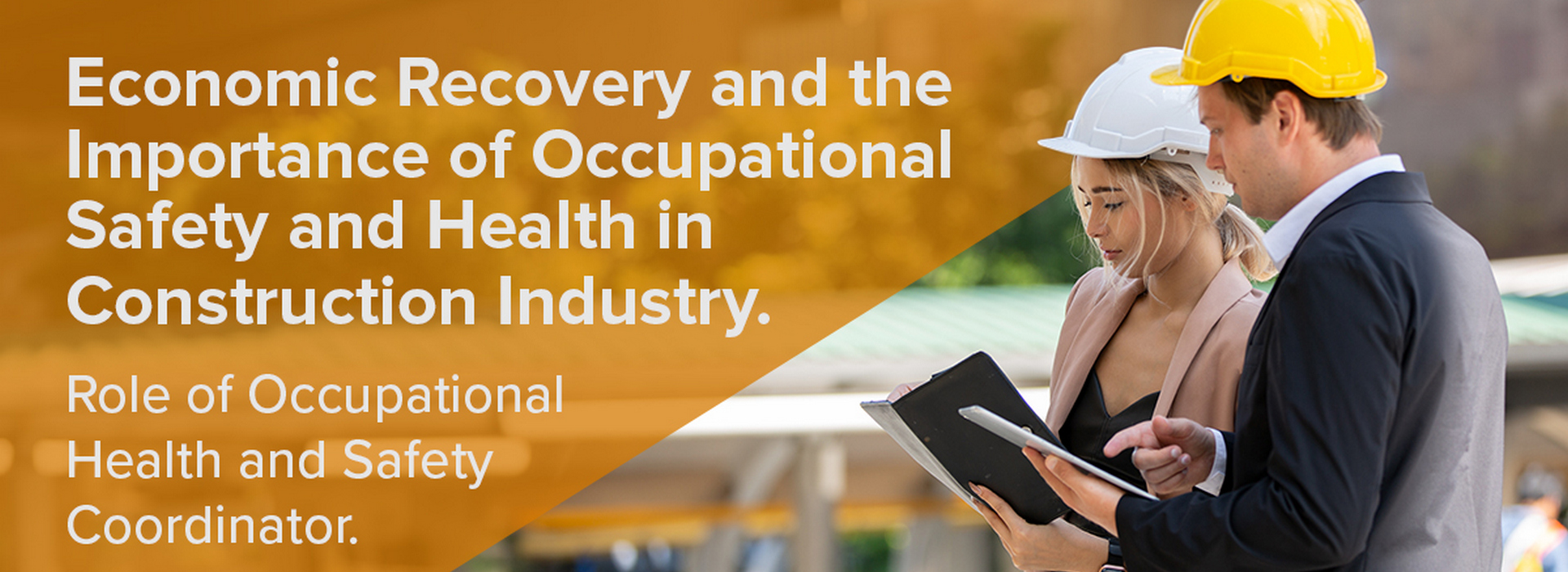As the economy recovers and the devastation caused by the war with russia requires large-scale reconstruction, occupational health and safety issues are becoming a major focus, especially regarding the construction industry.
Given the need to quickly restore infrastructure, residential and social facilities, there are many challenges associated with the risks to employee health and safety. Therefore, ensuring safe working conditions at construction sites is becoming a key aspect, which requires a systematic approach and the implementation of uniform safety standards.
The regulatory document entitled “Minimum Requirements for Occupational Safety at Temporary and Mobile Construction Sites”, approved by the Order of the Ministry of Social Policy of Ukraine No. 1050 on June 23, 2017, sets out the fundamental principles of safety at construction sites.
This regulatory act was developed to regulate the responsibilities and obligations of all participants of the construction process, including customers, project managers, general and direct contractors, as well as subcontractors and self-employed persons.
An important condition stipulated by the “Minimum Requirements” is the creation of a safe working environment at construction sites that may be considered temporary or mobile, and compliance with certain safety standards when performing specific types of construction work.
Customers and project managers are obliged to notify the relevant territorial authority of the State Labor Service of Ukraine of their intention to start construction works in the prescribed form (Annex 2 to the “Minimum Requirements”) 30 days before the start of construction works, if:
- the planned duration of the project is more than 30 working days and more than 20 people will work on the site at the same time;
- the scope of work will be more than 500 man-days.
Additionally, the clients or the project managers should appoint occupational health and safety coordinators at different stages of the project: during planning and construction. The coordinator for the planning stage is appointed before the development of project documentation, and for the construction stage — before the start of the actual works.
Occupational health and safety coordinators are responsible for coordinating compliance with safety regulations, developing and implementing an occupational health and safety plan that minimizes risks and protects the lives and health of employees, especially at high-risk sites. Developing a detailed occupational health and safety plan that covers all aspects of safety from design to completion is crucial in ensuring that employees are well protected. This plan should include a set of measures aimed at ensuring safe working conditions at the site, considering the specifics of the works performed and potential risks.
The qualifications of the coordinators must meet high requirements, namely they must have:
- higher education in a field relevant to their responsibilities;
- at least five years of experience in architecture, construction or project management;
- qualification as an occupational safety and health engineer in the construction industry, confirmed by an independent organization.
The coordinators are also tasked with ensuring the implementation of and compliance with established occupational health and safety procedures at all stages of construction, monitoring compliance with safety rules by personnel, and organizing training and briefings on occupational health and safety for all construction site employees.
The “Minimum Requirements” require all the participants in the construction process not only to formally appoint occupational health and safety coordinators, but also to ensure that conditions are in place to effectively protect the lives and health of people working on temporary or mobile construction sites.
The application of these rules is mandatory to ensure a high level of occupational safety, the efficiency of construction projects, and to minimize the risk of delays due to injuries or accidents on the sites.
BDO Consulting LLC, having experienced specialists in occupational safety, offers its services to create a safe working environment at the construction sites. We provide comprehensive support, including advice on the development of occupational health and safety plans, organization of training programs for employees, advice on compliance with safety standards, and assistance in implementing best practices in this area.
A high level of safety at the construction sites not only reduces the risks to the health and life of employees, but also contributes to increased labor productivity, reduced labor losses due to injuries, and has a positive impact on the company's reputation from customer and employee perspectives. This, in turn, is an important factor in the successful implementation of construction projects and the sustainable development of the construction industry as a whole.
Ensuring safety at the construction sites requires all the participants involved in the construction process not only to comply with the existing rules and regulations, but also to continuously pay attention to the possible risks and improve their occupational safety systems. That's why we emphasize the importance of integrating best practices and innovations into occupational health and safety plans, which allows us not only to meet standards but also to stay ahead of the potential threats.
As the company with a strong expertise in occupational safety and health, we feel responsible and are ready to contribute to the creation of a safe working environment at the construction sites to contribute not only to the reconstruction, but also to the progress and development of our country.


























